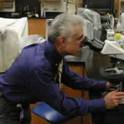
Article
Intrapleural activation, processing, efficacy, and duration of protection of single-chain urokinase in evolving tetracycline-induced pleural injury in rabbits
American Journal of Physiology - Lung Cellular and Molecular Physiology
(2007)
Abstract
Intrapleural fibrinolysins have been used to treat pleural loculations. However, the efficacy of clinically available agents has recently been questioned, providing a rationale for investigation of new interventions. Single-chain urokinase plasminogen activator resists inhibition by serpins, and repeated, daily intrapleural administration of this agent prevents intrapleural loculation more effectively than complexes of this proenzyme with its receptor (Idell S, Mazar A, Cines D, Kuo A, Parry G, Gawlak S, Juarez J, Koenig K, Azghani A, Hadden W, McLarty J, Miller E. Am J Respir Crit Care Med 166: 920–926, 2002). Understanding of the protective mechanism and intrapleural processing remains unclear. We speculated that single-chain urokinase could induce sustained local fibrinolysis and protection by selective administration either before, during, or following loculation after pleural injury induced by tetracycline in rabbits. Enzymography, immunoassays, histology, immunohistochemistry, morphology, and morphometry were used to test the efficacy, duration of protective effect, and processing of single-chain urokinase. Intrapleural single chain urokinase prevented loculation at 72 h after injury (P < 0.01) if given either before or during adhesion formation and was converted to two-chain high-molecular-weight urokinase, which remained active for at least 24 h within pleural fluids. The effect was dose dependent, and established loculations at 72 h after tetracycline-induced injury were reversed at 96 h by single-dose treatment. Single-chain urokinase bound and saturated intrapleural plasminogen activator inhibitory (PAI)-1-like activity and urokinase-related immunoreactivity of the mesothelium was comparable in treatment or vehicle-control groups. Adhesions recurred by 2 wk after treatment with recurrence of excess local PAI activity. Single-chain urokinase induces sustained local fibrinolysis and reversibly prevents pleural loculation for up to 48 h after intrapleural administration after tetracycline-induced injury.
Disciplines
Publication Date
January 10, 2007
DOI
10.1152/ajplung.00118.2006
Publisher Statement
First published by the American Journal of Physiology - Lung Cellular and Molecular Physiology.
Citation Information
Azghani, A. O. (2007). Intrapleural activation, processing, efficacy, and evolving tetracycline-induced pleural injury in rabbits. Am J Physiol Lung Cell Mol Physiol, 25–32.
